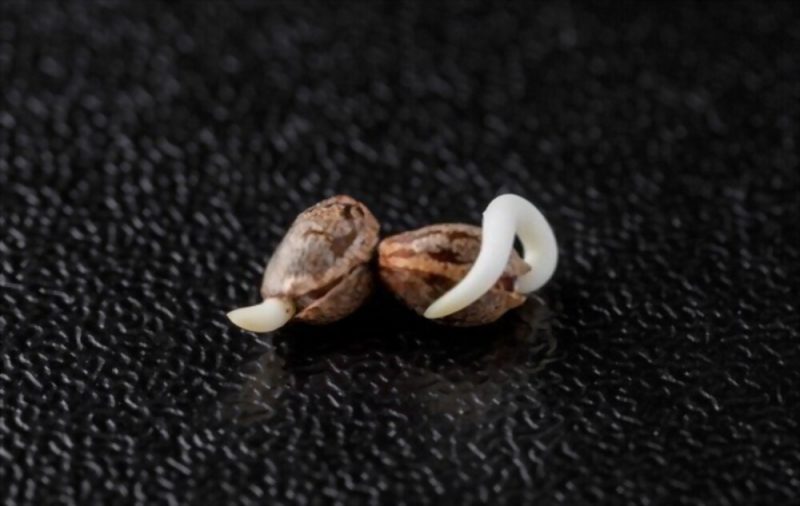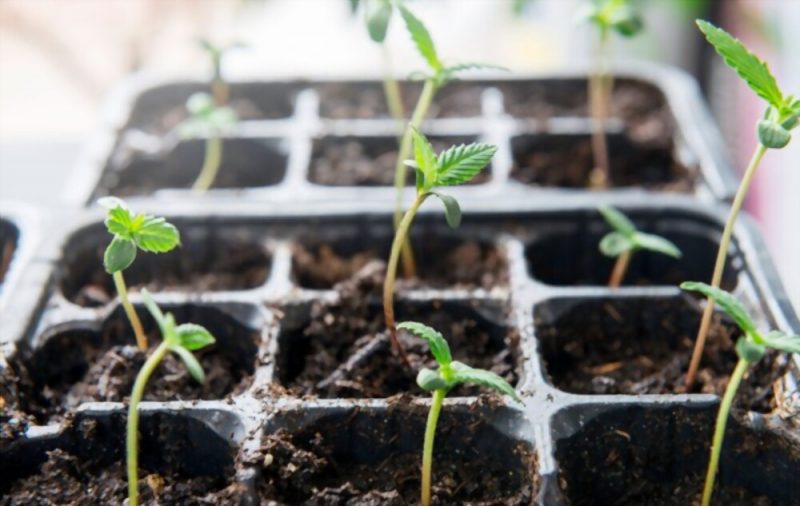🔥 Website for Sale - Contact Us
Cannabis cultivation is a complex process that requires careful attention to detail and a deep understanding of the plant’s growth patterns. One of the most common questions that novice growers ask is, “how big should my plants be after 2 months?”
This is an important question because plant size can have a significant impact on its overall health and yield. In this article, we will explore the factors that influence cannabis plant growth and provide some guidelines for how big your plants should be after two months of growth.
Overview of cannabis growth stages

Cannabis growth stages are divided into four main phases: germination, vegetative growth, flowering, and harvesting. Each growth stage requires specific care and attention to ensure healthy plant growth and maximum yield.
During the germination stage, cannabis seeds sprout and develop into seedlings. This stage requires proper moisture, warmth, and light to encourage healthy root and stem growth.
The vegetative growth stage is when the plant begins to develop leaves and branches. This stage requires adequate lighting, nutrients, and pruning to promote healthy growth and prevent overcrowding.
The flowering stage is when the plant begins to produce buds. This stage requires specific lighting and nutrient levels to encourage bud development and prevent stress that can lead to hermaphroditism.
Finally, the harvesting stage is when the buds are ready to be harvested and dried. This stage requires careful monitoring of the plant’s trichomes to determine the optimal time for harvest.
Overall, proper care and attention throughout each stage of cannabis growth are essential for healthy plant development and maximum yield. Monitoring plant growth and making adjustments as needed is crucial for successful cannabis cultivation.
The Importance of monitoring cannabis plant growth
As a cannabis grower, monitoring the growth of your plants is crucial to ensure a successful harvest. It allows you to identify any issues early on and make necessary adjustments to optimize plant health and yield. Here are some reasons why monitoring cannabis plant growth is important:
1. Identifying nutrient deficiencies: Cannabis plants require a specific balance of nutrients to grow healthy and produce high-quality buds. By monitoring plant growth, you can identify any nutrient deficiencies or excesses and adjust your feeding regimen accordingly.
2. Preventing pest and disease outbreaks: Early detection of pests and diseases is key to preventing them from spreading and causing significant damage to your plants. Regular monitoring allows you to spot any signs of infestation or infection and take appropriate measures to control them.
3. Ensuring proper environmental conditions: Cannabis plants are sensitive to changes in temperature, humidity, and light. Monitoring these factors can help you maintain optimal growing conditions and avoid stress on your plants.
4. Training and pruning: Regular monitoring helps identify when your plants need training or pruning to promote healthy growth and maximize yield.
Monitoring cannabis plant growth is essential for any successful grower. By paying close attention to your plants and making necessary adjustments, you can ensure healthy growth, prevent issues, and ultimately achieve a bountiful harvest.
Factors Affecting Cannabis Growth
Cannabis plant growth is influenced by various factors, including environmental conditions, genetics, nutrients, and cultivation techniques. Understanding these factors is crucial for achieving optimal growth and harvest. Here are some of the key factors affecting cannabis growth:
1. Light: Cannabis plants require a specific amount of light to grow and produce buds. Intensity, duration, and light spectrum all play a role in plant growth. Insufficient light can lead to stunted growth, while too much light can cause heat stress and damage the plant.
2. Temperature: Cannabis plants thrive in day temperatures of 20-30°C and 15-20°C at night. Extreme temperatures can cause stress and affect plant growth and yield.
3. Humidity: Cannabis plants require a specific level of humidity to grow. High humidity can lead to mold and mildew, while low humidity can cause the plant to dry out and wilt.
4. Genetics: The genetics of a cannabis plant play a significant role in its growth and yield. Different strains have different growth patterns, nutrient requirements, and flowering times.
5. Nutrients: Cannabis plants require a balanced mix of nutrients, including nitrogen, phosphorus, and potassium, to grow and produce buds. Overfeeding or underfeeding can lead to nutrient deficiencies or toxicities, affecting plant growth and yield.
6. Water: Cannabis plants require a consistent fresh supply of water to grow. Overwatering or underwatering can cause stress and affect plant growth and yield.
7. Cultivation techniques: The way cannabis plants are grown, including the medium, pruning, and training techniques, can affect their growth and yield.
In conclusion, understanding the factors affecting cannabis growth is crucial for achieving optimal results. By monitoring and adjusting these factors as needed, growers can ensure healthy, vigorous plants and maximize their yield.
The average growth rate of cannabis plants
Cannabis plants are known for their rapid growth rate, especially during the vegetative stage. On average, cannabis plants can grow up to 2-3 inches per day during this stage. However, the growth rate can vary depending on various factors such as genetics, growing conditions, and nutrients.
During the flowering stage, the growth rate slows down, and the plant focuses on producing buds. The growth rate during this stage can be anywhere between 0.5-1 inch per day.
It’s essential to monitor the growth rate of cannabis plants regularly and make adjustments as needed. If the growth rate is slower than expected, it could be a sign of nutrient deficiencies or other issues. On the other hand, if the growth rate is too fast, it could be a sign of overfeeding or other problems.
In conclusion, monitoring the growth rate of cannabis plants is crucial for ensuring healthy and robust growth. By making adjustments as needed, you can help your plants reach their full potential and produce high-quality buds.
Average height and width of cannabis plants after 2 months
Cannabis plants can grow to different heights and widths depending on various factors such as genetics, growing conditions, and cultivation techniques. However, on average, cannabis plants can reach a height of 30-60 cm (12-24 inches) and a width of 30-45 cm (12-18 inches) after 2 months of growth.
It is important to note that the height and width of cannabis plants can vary depending on the strain, growing medium, and environmental conditions. Therefore, it is essential to monitor the plant’s growth and do adjustments to ensure optimal yield.
Tips for Promoting cannabis Growth
As a cannabis plant grows, it requires proper care and attention to ensure that it reaches its full potential. Here are some tips for promoting cannabis growth:
1. Provide Adequate Lighting: Cannabis plants require a lot of light to grow properly. Ensure that your plants receive at least 12 hours of light per day. You can use artificial lighting or natural sunlight, but ensure the light source is strong enough to penetrate the plant canopy.
2. Maintain Proper Temperature and Humidity: Cannabis plants thrive in a warm and humid environments. The ideal temperature range for cannabis growth is between 70-85°F (21-29°C), and the humidity level should be around 50-60%. Use a thermometer and hygrometer to monitor temperature and humidity levels in your grow tent.
3. Use Quality Soil: The soil you use for your cannabis plants should be rich in nutrients and have good drainage. You can use a pre-made soil mix or create your own by mixing compost, perlite, and vermiculite. Make sure to test the pH level of your soil and adjust it if necessary.
4. Water Your Plants Properly: Overwatering or underwatering your cannabis plants can stunt their growth or even kill them. Water your plants when the top inch of soil feels dry to the touch. Use a watering can or hose with a gentle spray to avoid damaging the plants.
5. Use Nutrients: Cannabis plants require many nutrients to grow properly. You can use organic or synthetic fertilizers to supplement necessary nutrients. Make sure to follow the manufacturer’s instructions and avoid overfeeding your plants.
6. Prune Your Plants: Pruning your cannabis plants can help promote growth and increase yields. Remove any dead or yellowing leaves, as well as any branches that are blocking light from reaching the lower parts of the plant.
7. Monitor for Pests and Diseases: Pests and diseases can quickly damage or kill cannabis plants. Keep a close eye on your plants and look for any signs of pests or diseases. Use organic or chemical pesticides and fungicides to treat any issues.
By following these tips, you can promote healthy cannabis growth and increase your yields. Remember to be patient and consistent in your care, and your plants will reward you with a bountiful harvest.
Summary
Generally, cannabis plants should be around 12-24 inches tall after two months of growth. It is important to monitor the growth of your plants regularly and adjust your cultivation techniques accordingly to ensure optimal growth and yield.





